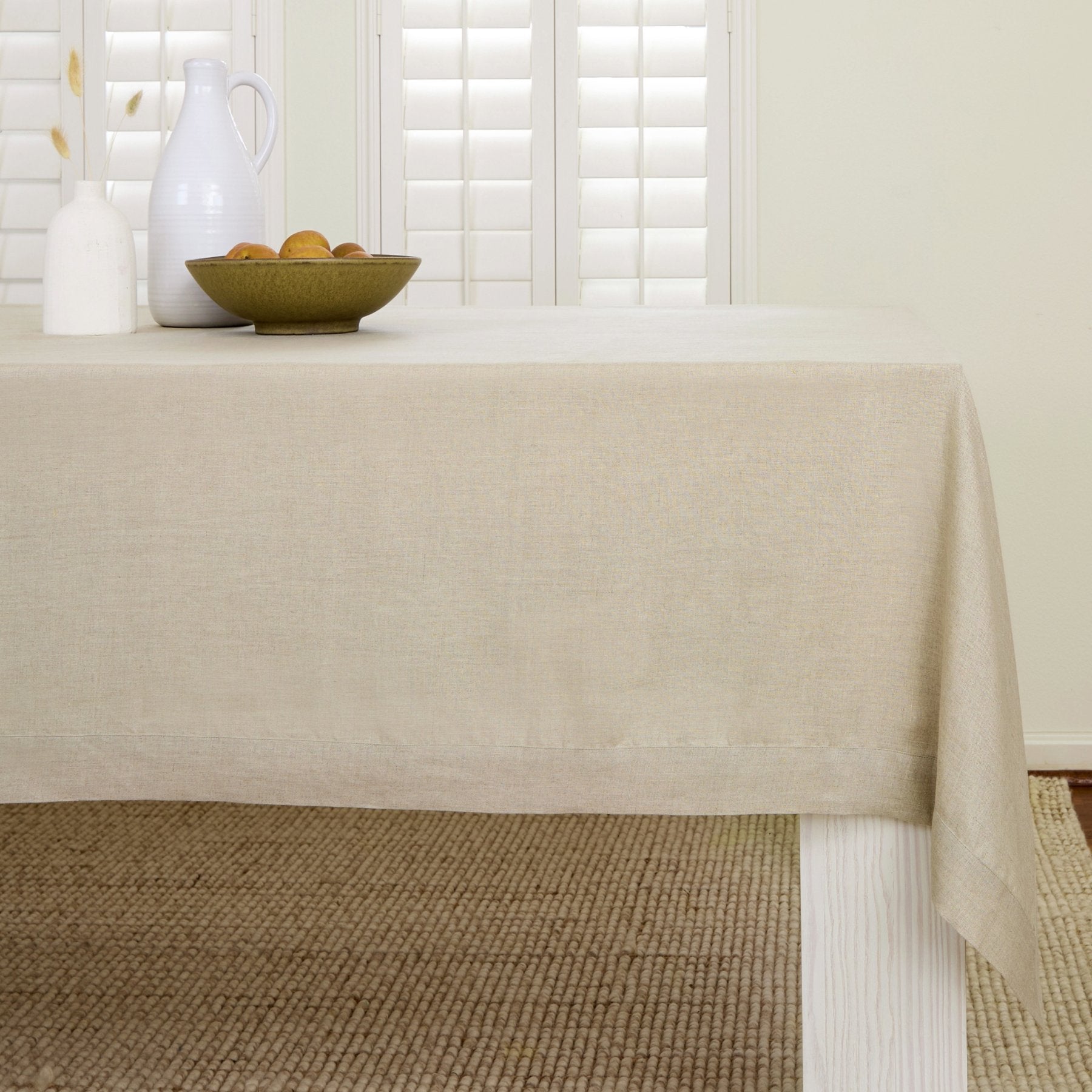Imaginative Table Runner Makes Use Of: Past the Table
Imaginative Table Runner Makes Use Of: Past the Table
Blog Article
Linen Material Technologies: Exploring Modern Trends and Creative Applications in Layout and Textile Industry
From sustainable production methods to sophisticated weaving technologies, the development of linen is reshaping the landscape of the fabric market. As we dig into the worlds of creative layout applications and the introduction of linen blends and hybrid textiles, a brand-new chapter unravels in which linen's role in future textile innovations takes facility stage.
Lasting Practices in Bed Linen Production
Lasting methods in bed linen manufacturing have come to be significantly critical in the textile industry's initiatives to reduce ecological influence and advertise ethical sourcing approaches. Linen, an all-natural fiber originated from the flax plant, offers an array of benefits such as toughness, biodegradability, and breathability. Nevertheless, traditional techniques of linen manufacturing can include significant water usage, chemical use, and energy-intensive procedures.
To address these difficulties, many textile producers are adopting sustainable practices throughout the bed linen production procedure. This consists of sourcing flax from organic farms that avoid unsafe pesticides and chemicals, applying water-efficient retting techniques to essence fibers from the flax stalks, and making use of environment-friendly dyes and finishes. Furthermore, some firms are purchasing renewable resource resources to power their manufacturing facilities and minimizing waste with recycling and upcycling initiatives.
Technological Improvements in Bed Linen Weaving
With the expanding focus on sustainable practices in linen production, the textile market is currently observing a rise in technological developments particularly targeted at reinventing the art of bed linen weaving. These technologies are improving the means linen fabrics are produced, providing boosted effectiveness, top quality, and creative thinking in weaving techniques.
One of the key technological advancements in linen weaving is the integration of computerized looms. These innovative looms are equipped with software that allows for intricate and detailed layouts to be woven with accuracy. By digitizing the weaving process, producers can achieve greater uniformity and precision in their linen fabrics.
Additionally, developments in yarn spinning modern technology have actually made it possible for the manufacturing of finer and more resilient linen threads - table cloths. This causes softer and smoother linen fabrics that maintain their high quality also after multiple usages and cleans
Furthermore, the development of environmentally friendly dyeing processes and surfaces for linen materials is acquiring grip. These lasting practices not just minimize the environmental influence however also deal with the boosting consumer need for ethically created textiles.
Creative Layout Applications for Linen
Ingenious artistic techniques are significantly shaping the innovative style applications for bed linen in the textile market. Bed linen's all-natural visual appeal and capability to mix with various other textiles make it a preferred option for developing distinct garments and accessories that provide to the eco aware consumer.
Furthermore, developers are trying out with bed linen in home design, using its resilient and breathable nature to craft fashionable furnishings such as drapes, bed linens, and furniture. The appearance and drape of linen bring a sense of class and convenience to indoor areas, including a touch of style to modern homes.

Bed Linen Blends and Crossbreed Fabrics

Crossbreed materials, on the other hand, take the principle of blending an action better by integrating additional components such as metal threads, recycled products, or conductive fibers. These cutting-edge textiles not only expand straight from the source the style possibilities yet also present practical aspects like conductivity, antimicrobial residential or commercial properties, or boosted toughness. Hybrid fabrics are significantly being utilized in various sectors, including style, interior decoration, and technical textiles, where the demand for multifunctional products is on the surge.
Linen's Role in Future Fabric Innovations

In the world of future fabric developments, linen is anticipated to be a principal in the development of sophisticated practical textiles. Developers and researchers are discovering ways to improve bed linen's integral top qualities via technological advancements, such as incorporating wise textiles, nanotechnology, and performance surfaces. These advancements aim to boost linen's performance characteristics, making it appropriate for a wider series of applications, from activewear to protective clothes.
Furthermore, the combination of linen with other natural or artificial fibers opens countless opportunities for developing unique fabrics with special properties and functionalities. By leveraging bed linen's features and discovering ingenious blends, the textile industry Look At This is positioned to present interesting advancements that satisfy evolving consumer demands and sustainability needs.
Final Thought
Finally, the exploration of lasting methods, technological advancements, creative layout applications, bed linen blends, and its role in future fabric technologies highlight the constant development of linen textile in the modern-day style and textile sector. With a concentrate on development and creativity, the convenience and environment-friendly nature of linen make it an important product for suppliers and developers alike, leading the way for additional advancements and advancements in the area of textiles.
As we dive into the worlds of creative layout applications and the development of bed linen blends and hybrid textiles, a new phase unfolds in which bed linen's role in future fabric technologies takes facility phase.
Checking out the fusion of bed linen with other materials has actually led to the emergence of ingenious blends and crossbreed textiles in the modern fabric industry. Bed linen blends offer an one-of-a-kind combination of the features of linen with those of other fibers, resulting in materials that have enhanced residential or commercial properties such as boosted resilience, enhanced draping, and lowered wrinkling.The evolution of bed linen blends and crossbreed textiles has set the phase for Bed linen to play a pivotal function in driving future textile technologies.In the world of future textile developments, linen is expected to be a crucial gamer in the development of advanced practical materials.
Report this page